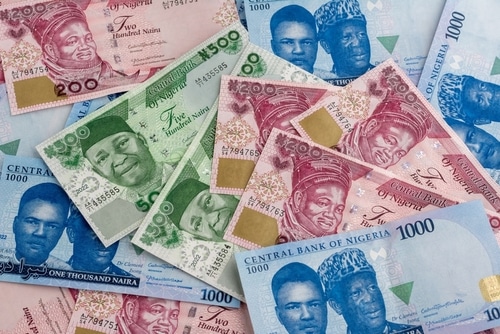Nicknamed the “Giant of Africa,” Nigeria is known for its strong impact on Africa’s economy and culture. It has the biggest economy in Africa. Nigeria is home to popular things like Nollywood movies, Afrobeats music, and well-known writers like Chimamanda Ngozi Adichie. The naira is the main currency that be at the center of Nigeria’s economy. This guide will help you know more about the naira. You will read about its story, its value now, and how people use it in their daily lives.
What Is the Nigerian Naira?
The Nigerian naira (₦), with the code NGN, is the main money used in Nigeria. Like the U.S. dollar, the naira is split into 100 smaller parts known as kobos. The Central Bank of Nigeria (CBN) is based in Abuja. It gives out and controls the money for the country.
Coins in Circulation:
- 50 kobos
- ₦1
- ₦2
Banknotes in Circulation:
- ₦5
- ₦10
- ₦20
- ₦50
- ₦100
- ₦200
- ₦500
- ₦1000
Nigerian banknotes are known for their bright colors. The notes also show important people from the country. These pictures tell about the rich history and culture of Nigeria.
A Brief History of Nigerian Currency
Before the British came, different parts of what is now Nigeria used many things as money. People traded salt, beads, and other useful goods. In 1880, when the British currency was introduced, Nigeria started to use the same kind of money everywhere. That is when shillings and pence became the money used in Nigeria.
In 1973, Nigeria switched from using the British pound to its own money system. This new system brought in the naira and kobo. The change was made to help Nigeria build its own national identity after becoming independent.
Over the years, the CBN has brought out different money notes because of changes in the economy. This was to help with things like inflation and when people need higher-value for deals. There have also been special notes made to remember big events. For example, the ₦50 note came out in 2010 for Nigeria’s 50th year of independence.

Unique Features of Nigerian Currency
1. Etymology of ‘Naira’:
The word “naira” was first used by Chief Obafemi Awolowo. He was Nigeria’s Federal Commissioner of Finance in the early 1970s. This name comes from the word “Nigeria.” It shows the country’s freedom and its own strong economy.
2. Distinctive Coin Designs:
Most coins are round. But the 50 kobo coin is different. It has a 12-sided shape. There are cobs of corn on the front. The back shows the Nigerian coat of arms.
3. Commemorative Banknotes:
The ₦100 note that came out in 2014 has a QR code on it. When you scan the code, you get to read about Nigeria’s 100-year history. This note brings together old ways of making money and new ideas that use computers and phones.
4. Cultural Representations:
Unlike some other currency notes that show political leaders, the ₦50 note has pictures of everyday people. You can see fishermen on it. This design shows that the nation is made up of many groups of people from different backgrounds.
5. Currency Handling Regulations:
The CBN’s Clean Notes Policy says you should not mistreat naira notes. You cannot spray, write on, or tear them. This rule is there to help keep the currency in good shape and make it last longer.
Understanding Nigerian Naira Exchange Rates
Exchange rates for the naira can go up or down because of several things. Some of the main reasons are changes in world oil prices, the level of inflation, and the country’s economic policies. As of May 23, 2025, the exchange rates are about:
- 1 USD is equal to ₦1,589.99
- 1 EUR is equal to ₦1,799.72
- 1 GBP is equal to ₦2,133.13
It’s important to know that these rates can change from one official place to another or in other side markets. For the best and latest rates, check the CBN’s official website or trusted money platforms.
Tips for Exchanging and Sending Money to Nigeria
Bringing Currency into Nigeria:
Travelers can bring up to $10,000 or the same amount in other money into Nigeria without saying anything. If you have more than this, you need to tell them when you arrive.
Currency Exchange:
You can exchange foreign money at banks, authorized dealers, or Bureau de Change places. It’s a good idea to look at the rates at each place. Be careful, as there can be fake notes.
Using ATMs:
ATMs can be found in big city areas. But, you should watch out for extra fees when you take out money. Make sure the ATM you use is in a safe place.
Sending Money:
Because of rules set by officials, people in Nigeria usually get money from other countries in U.S. dollars. After that, they can change dollars to naira by using the approved ways. Remitly is one service that gives a safe and quick way to send money.
Frequently Asked Questions
What is the symbol and abbreviation for the Nigerian naira?
The Nigerian naira uses the symbol “₦.” People also call it “NGN.”
How is the naira subdivided?
One naira is split into 100 smaller parts, and these are called kobos.
Who issues the Nigerian currency?
The Central Bank of Nigeria (CBN) gives out and looks after the country’s money. It makes sure the rules for the currency are followed.
Can I bring foreign currency into Nigeria?
Yes, travelers can bring up to $10,000 or the same value in another money without saying it at the border. If you have more than this, you must tell them when you enter.
Are there restrictions on sending money to Nigeria?
Yes, because of the rules set by the government, most international money sent will be received in U.S. dollars. The person getting the money can then change it to naira.

